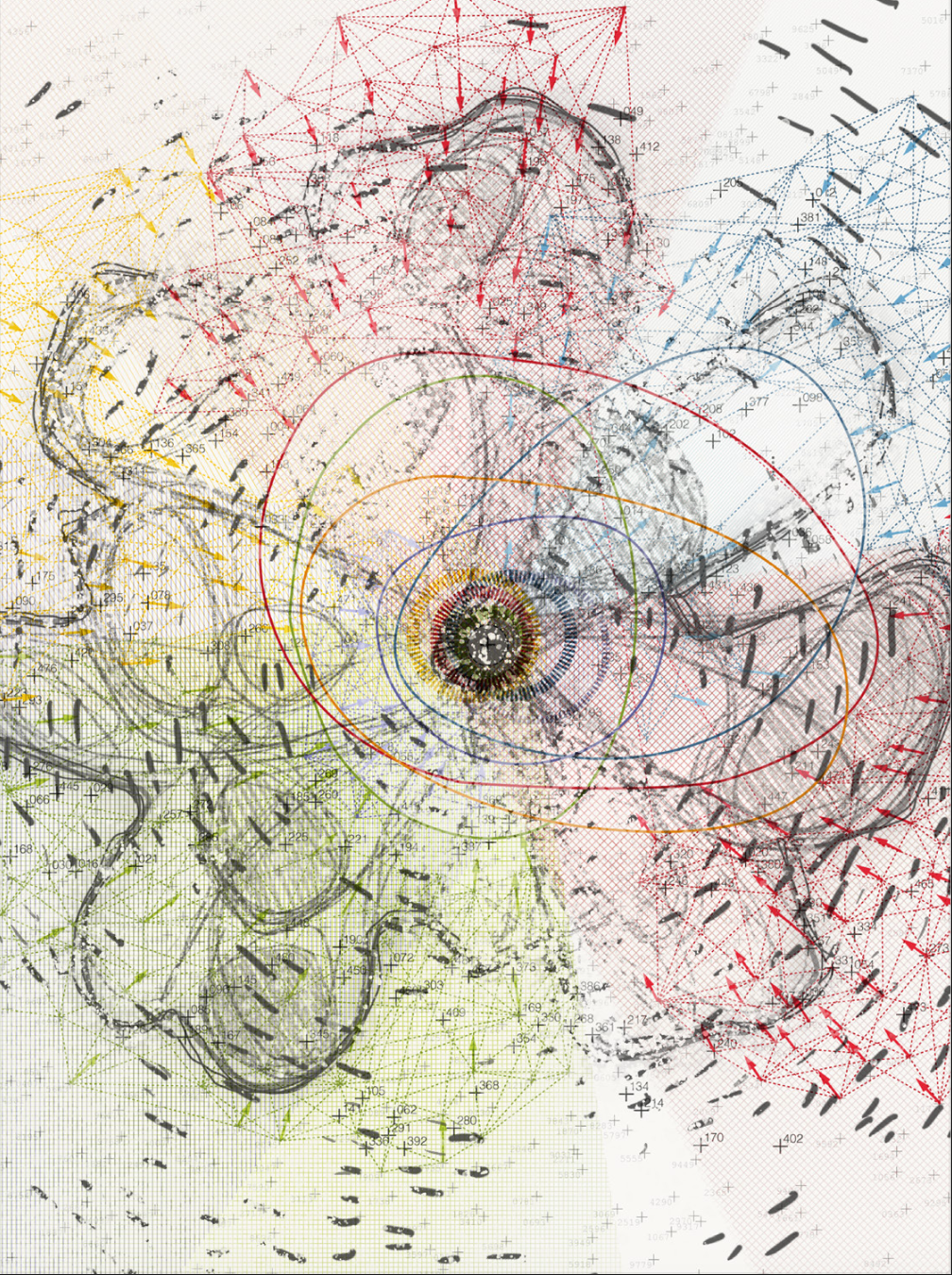Towards an Architectonics of Environmentality: Diagramming the Spatial Production of Textural and Infrastructural Semiotics
Article Sidebar

Keywords:
Main Article Content
Abstract
In 1979, Michel Foucault defines environmentality as a form of power in which control is exerted through design and modulation of the environment. A techno-symbiotic environment where the milieu of biology, geography, and history, and the media of communication and information technologies merge. If the role of architecture in sovereign and disciplinary devices is better known, there is pending work to understand the architectonics at the heart of environmentality. We start from an affective-spatial diagramming of the surrounding world, understood as an ecology of signs capable of affecting an individual – textural semiotics –, to then analyze the emergence of infrastructural semiotics in 20th-century capitalism, sets of discrete signals that direct and arrange the body, modulating its spheres of possibilities and automatizing its behaviors. In the conflict between both semiotics, we point at the possibility of conceiving texture, noise, and affects as a source of rebellion, as an affirmation of a more-than-human us.
Article Details

This work is licensed under a Creative Commons Attribution-NonCommercial 4.0 International License.
Materia Arquitectura provides immediate and free access to all the content of this online edition, published simultaneously with the print edition.
Materia Arquitectura does not charge authors for any concept.
All contents of this electronic edition are distributed under the Creative Commons license of "Attribución-shareAlike 4.0 Internacional" (CC-BY-SA).
The rights of the published texts and images belong to their authors, who grant Materia Arquitectura the license for their use. The management of the permits and the authorization of the publication of the images (or of any material) that contains copyright and its consequent rights of reproduction in this publication is the sole responsibility of the authors of the articles.
As long as they mention their origin, the authors are free to distribute their articles by other means. Any total or partial reproduction of the material must mention its origin.